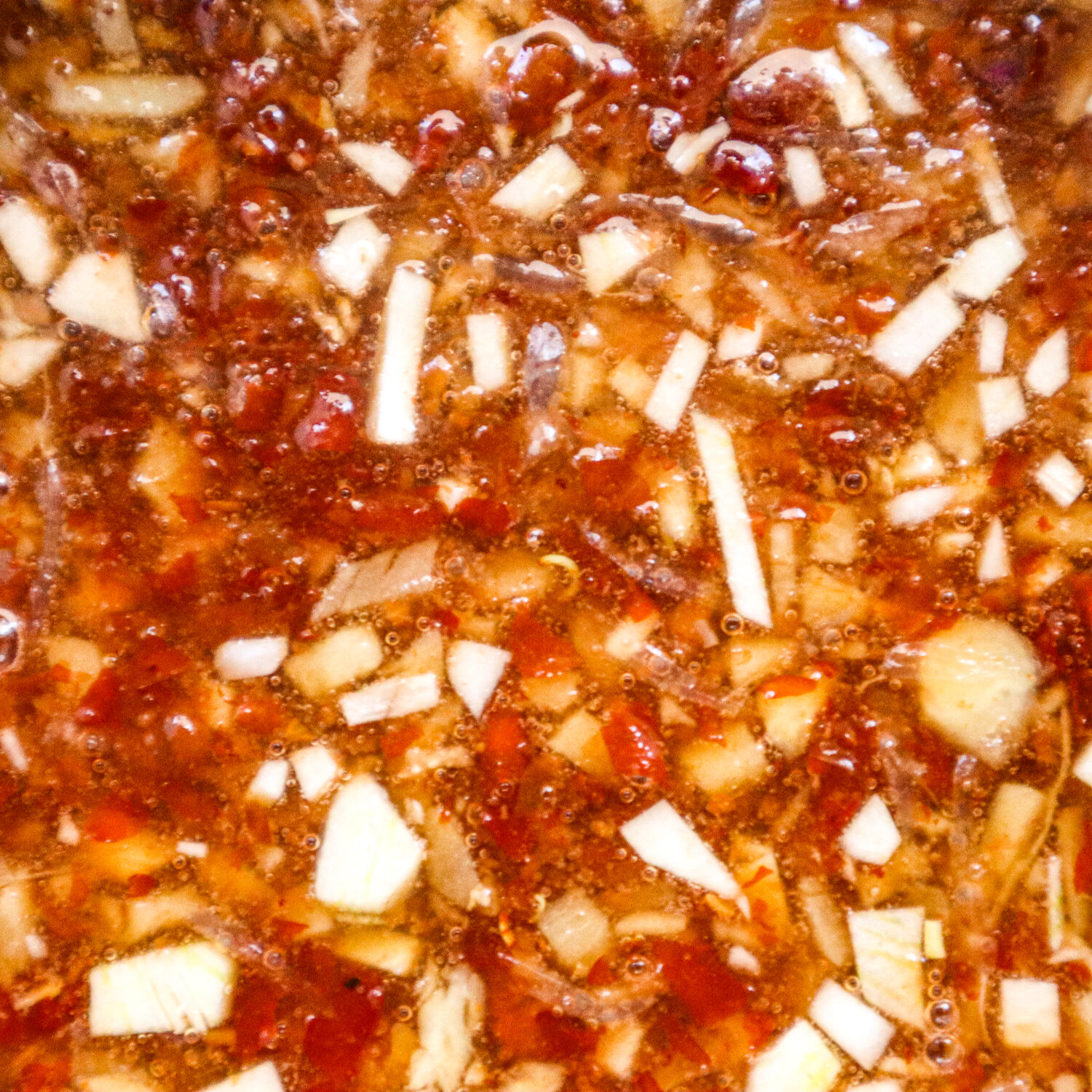
Yield 4
Prep time
14 MinTotal time
14 MinNước Chấm
Nước Chấm (Seasoned Fish Sauce)is the staple table condiment on most Vietnamese dining tables. Most commonly used as a dressing and a dipping sauce. Its complex, yet balanced flavors [spicy, savory, bright, sweet, and salty] have the ability to enhance any dish. It's this distinction that determines the Vietnamese palate. And often serves as the mark of quality in a traditional Vietnamese meal.
Ingredients
Instructions
- Chop Thai Chili
- Mince garlic and shallot
- In a medium-sized mixing bowl the minced add 2 tsp. of Thai Chili, 2 tbsp. of Minced Shallot, 2 tsp. of Minced Garlic.
- Add2 tsp. of Fermeneted Chiil
- Add 1/4 cup of Lemon Juice
- Add 1 cup of Coconut Water
- Add 1/4 cup of Son Fish Sauce
- Then season the sauce with 3 tbsp Organic Sugar (or 1/3 tsp stevia)
- And last, stir the sauce until the ingredients all well incorporated.














![Gỏi Cuốn Tôm [Shrimp Summer Rolls] Gỏi Cuốn Tôm [Shrimp Summer Rolls]](https://i.imgur.com/iFtKeQd.jpg)






